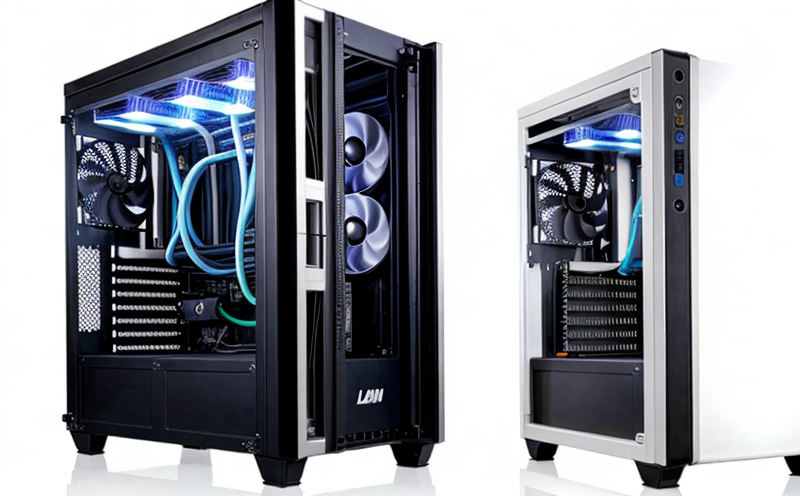DIN EN 13779 Air Distribution Performance Testing
The DIN EN 13779 standard is a crucial document in the HVAC industry, specifically addressing the performance and capacity testing of air distribution systems. This international standard ensures that air distribution within buildings meets design specifications for comfort, health, and energy efficiency. The standard applies to all types of HVAC equipment, including ducted and non-ducted systems.
Understanding the scope of this test is essential for compliance officers and engineers working in HVAC sectors. DIN EN 13779 focuses on evaluating air distribution performance, which includes airflow rates, uniformity, and noise levels. The test aims to ensure that the air delivered by the system meets the specified requirements for each zone within a building.
The process begins with pre-test preparations, where the equipment is calibrated using appropriate instruments such as anemometers and sound level meters. These tools are used to measure airflow rates and noise levels accurately. The testing environment must be controlled to ensure consistent results, which can vary significantly depending on factors like temperature, humidity, and pressure.
The test involves placing the equipment in a standardized test setup that mimics real-world conditions as closely as possible. This setup includes sensors and measurement devices that record data throughout the testing process. The standard specifies precise procedures for measuring these parameters to ensure accuracy and reliability.
Once the tests are completed, detailed reports are generated based on the collected data. These reports provide insights into how well the air distribution system performs in terms of airflow rates, uniformity, and noise levels. Compliance with the standards is critical for ensuring that HVAC systems operate efficiently and effectively, contributing to overall building performance.
The results of DIN EN 13779 testing are used by quality managers and R&D engineers to make informed decisions about system upgrades or modifications. This helps in maintaining high standards of comfort and health while optimizing energy efficiency. The test is also valuable for procurement teams, as it ensures that the equipment purchased meets the required performance criteria.
Understanding the nuances of DIN EN 13779 testing is crucial for those involved in HVAC system design, installation, and maintenance. By adhering to this standard, professionals can ensure that their projects meet international benchmarks for air distribution performance.
Benefits
The benefits of complying with DIN EN 13779 are numerous and far-reaching. Firstly, it ensures compliance with international standards, which is essential for maintaining a reputable business image and meeting regulatory requirements. This standard guarantees that the air distribution systems installed in buildings meet the highest quality benchmarks.
Secondly, by adhering to DIN EN 13779, HVAC professionals can enhance the comfort and health of occupants within the building. The standard ensures that air is distributed uniformly across all zones, leading to more comfortable environments for everyone involved.
Thirdly, compliance with this standard contributes to energy efficiency by optimizing airflow rates and reducing noise levels. This not only leads to cost savings in terms of reduced energy consumption but also contributes positively to the environment by minimizing greenhouse gas emissions.
In addition, DIN EN 13779 testing helps in identifying potential issues early on, allowing for timely interventions that prevent costly repairs or replacements later down the line. This proactive approach ensures longer equipment life and better overall performance.
Lastly, adherence to this standard fosters a culture of continuous improvement within HVAC projects. It encourages professionals to stay updated with the latest technologies and practices, ensuring they are always working towards excellence in their field.
Industry Applications
- Hospitality: Ensuring air quality for guest comfort and health.
- Offices: Meeting the demand for a healthy indoor environment to improve productivity.
- Residential Buildings: Enhancing living conditions with optimal airflow distribution.
- Data Centers: Maintaining critical temperature and humidity levels for equipment longevity.
Environmental and Sustainability Contributions
DIN EN 13779 testing plays a vital role in promoting environmental sustainability. By ensuring that air distribution systems operate efficiently, the standard helps reduce energy consumption, which directly translates to lower carbon footprints.
The uniformity of airflow provided by compliant systems also contributes to better indoor air quality, reducing the risk of respiratory issues and other health problems associated with poor ventilation. This improved air quality is particularly beneficial in densely populated areas like offices and schools.
Furthermore, the noise levels measured during DIN EN 13779 testing help in minimizing acoustic pollution. Lower noise levels contribute to a healthier work environment and better sleep patterns for residents in nearby communities.
The standard's focus on energy efficiency aligns with global efforts toward sustainability. By promoting the use of efficient HVAC systems, DIN EN 13779 supports the transition towards greener practices across various sectors.





